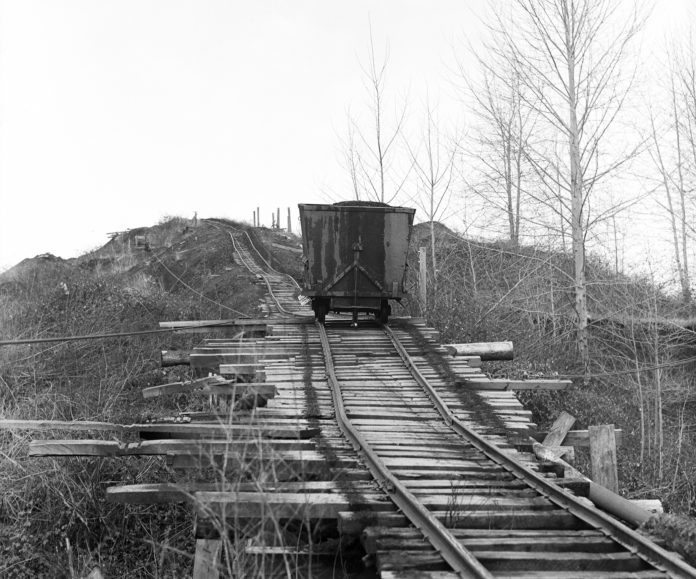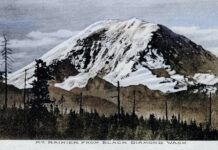Recent logging in Black Diamond has brought into stark relief a large stockpile of waste rock and shale located behind Palmer Coking Coal Co.’s retail sales yard at 31407 Highway 169. The hill rises 100 feet above the surrounding landscape.
This January 1973 photo shows how that stockpile grew over a period of more than 40 years. A steel cable pulls the loaded railcar to the top of the hill where the waste material dumped from two sides. This side-dump coal car was lowered back down under the plant for reloading and a climb back to the top.
A few years after this photo the cable-rail system was discontinued and the material hauled by rubber-tired scrapers and level spread. The waste shale and rock being disposed was separated from raw coal after passing through the wash plant located behind the photographer’s lens. This site had previously been used for underground coal mining with the opening of Morgan’s Slope in 1896. That mine was once the deepest underground coal mine in the U.S. In later years it was called Mine #11 before mining ended in 1927.
Thereafter, the Mine #11 site continued to support a rail yard and a succession of processing plants. In the following years, coal was mined elsewhere, brought to the plant, washed of impurities then shipped to market. A new McNally-Norton jig style wash plant was erected about 1945 and the stockpile of waste rock continued to grow. The pile eventually expanded to over 1 million cubic yards. The McNally-Norton plant remained in operation until November 1990 after which much of it was scrapped. Today, the only remaining part is the large metal wash tub which comprised the plant’s key processing component. This photo by Larry Abele was one of many taken, but not used for a feature story about coal mining in the Sunday, January 14, 1973 supplement, “Now” produced by the Renton Record-Chronicle, Kent News-Journal, and Auburn Globe newspapers.







